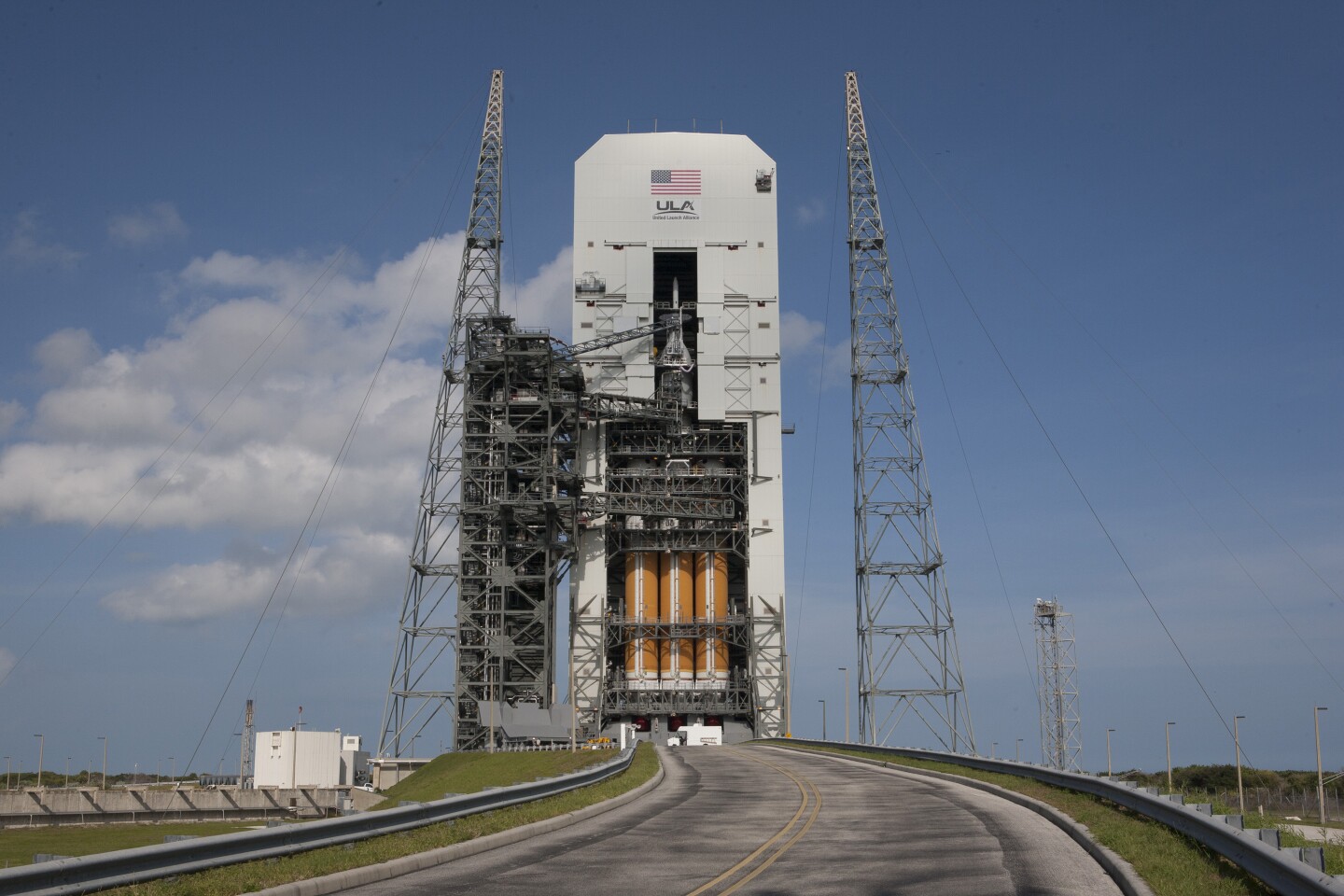Orion is go for launch. At a press conference today, NASA and aerospace industry officials confirmed that the EFT-1 mission to test the deep-space capsule designed to carry astronauts beyond low Earth orbit has been given the final clearance for launch on Thursday morning. The unmanned spacecraft will lift off from Space Launch Complex 37 at Cape Canaveral Air Force Station atop a United Launch Alliance Delta IV Heavy booster on a four-hour flight that will send it 3,600 mi (5,800 km) from Earth before returning to Earth.
NASA says that Orion, along with its simulated service module and launch vehicle are all green for launch. The hatch on the capsule has been sealed and the weather service predicts a 60 percent chance that conditions will hold fair the scheduled launch at 7:05 am CST on December 4. However, if there is a delay, the space agency says that it has a 2 hour 39 minute window that will allow the mission to be completed and the capsule to splashdown in the Pacific Ocean off the Baja Peninsula during daylight hours. If Thursday's launch is scrubbed, NASA has reserved the Eastern rocket range for Friday and Saturday to make another attempt.
Meanwhile, the US Navy announced that it has dispatched the San Antonio-class amphibious transport dock ship USS Anchorage (LPD 23) to the recovery area. The Navy says that the crew completed months of special training for picking up the Orion after splashdown, including coordination with the Johnson Space Center in Houston in the event of the capsule going off course.

Because this is a test flight, the Orion capsule will not have all of the systems that will be carried on manned missions. For example, instead of seats, Orion has simulated masses, so there's more room for instruments and the intricate web of cables needed for the craft to operate autonomously.
The capsule has been filled with cameras to record the flight, and radiation counters to measure exposure levels while flying through the hazardous Van Allen radiation belts, where it will encounter exposure levels 15 times greater than those on the International Space Station (ISS). NASA says that Orion faces an ironic problem in that though its computers are far more sophisticated than those flown on Apollo, they are also much more vulnerable than the 1960s versions, which passed through the belts several times without incident. To minimize damage, the computers and cameras will be switched off while traversing the belts.

Another first for NASA is that Thursday's launch will see the public debut of the space agency's new countdown clock. The venerable digital display that was seen by billions of people since the heyday of the Space Race in the 1960s had become too expensive to maintain, so it's been retired to a museum and its place taken by a more sophisticated video clock.
Source: NASA
Orion is go for launch. At a press conference today, NASA and aerospace industry officials confirmed that the EFT-1 mission to test the deep-space capsule designed to carry astronauts beyond low Earth orbit has been given the final clearance for launch on Thursday morning. The unmanned spacecraft will lift off from Space Launch Complex 37 at Cape Canaveral Air Force Station atop a United Launch Alliance Delta IV Heavy booster on a four-hour flight that will send it 3,600 mi (5,800 km) from Earth before returning to Earth.
NASA says that Orion, along with its simulated service module and launch vehicle are all green for launch. The hatch on the capsule has been sealed and the weather service predicts a 60 percent chance that conditions will hold fair the scheduled launch at 7:05 am CST on December 4. However, if there is a delay, the space agency says that it has a 2 hour 39 minute window that will allow the mission to be completed and the capsule to splashdown in the Pacific Ocean off the Baja Peninsula during daylight hours. If Thursday's launch is scrubbed, NASA has reserved the Eastern rocket range for Friday and Saturday to make another attempt.
Meanwhile, the US Navy announced that it has dispatched the San Antonio-class amphibious transport dock ship USS Anchorage (LPD 23) to the recovery area. The Navy says that the crew completed months of special training for picking up the Orion after splashdown, including coordination with the Johnson Space Center in Houston in the event of the capsule going off course.

Because this is a test flight, the Orion capsule will not have all of the systems that will be carried on manned missions. For example, instead of seats, Orion has simulated masses, so there's more room for instruments and the intricate web of cables needed for the craft to operate autonomously.
The capsule has been filled with cameras to record the flight, and radiation counters to measure exposure levels while flying through the hazardous Van Allen radiation belts, where it will encounter exposure levels 15 times greater than those on the International Space Station (ISS). NASA says that Orion faces an ironic problem in that though its computers are far more sophisticated than those flown on Apollo, they are also much more vulnerable than the 1960s versions, which passed through the belts several times without incident. To minimize damage, the computers and cameras will be switched off while traversing the belts.

Another first for NASA is that Thursday's launch will see the public debut of the space agency's new countdown clock. The venerable digital display that was seen by billions of people since the heyday of the Space Race in the 1960s had become too expensive to maintain, so it's been retired to a museum and its place taken by a more sophisticated video clock.
Source: NASA








